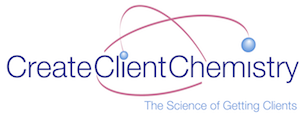 Okay, so what happens after a prospect becomes a client?
Okay, so what happens after a prospect becomes a client?
You’ve done a lot of hard work to convert a prospect into a paying client. How do you now cement this relationship into a satisfying long term working relationship, where your new client is happy to stay on for years on end?
As a start, you roll out the red carpet and make your new client feel super special.
Sending them a special gift is usually a good way to start.
This can be a box of chocolates, a bottle of wine or just something small to let them know you appreciate their business…and including a handwritten welcome note with your gift will just seal the deal.
The next step is to ensure both you and your new client are on the “same page” with regards to the working relationship. It is important to put this client at ease and provide them with the necessary information of how you work and what the roles of each party are.
For this, you can send your new clients a welcome kit.
A welcome kit serves as a reference guide to give them the information on how things work in your business. It can also go a long way towards establishing credibility and presenting yourself as a serious business owner.
What to Put in Your Welcome Kit?
Well, you can basically use anything that can help your new client understand your processes better.
You can include:
- An introduction or welcome letter on your company letterhead. The purpose of this letter is to make the client feel welcome and also to review the main points regarding the project/program you’ll be working on.
- Your bio – This can be your compelling story of how you got to where you are now. Clients love to know more about you the moment they start working with you. This helps them to relate better to you. Include some interesting facts, life experiences and your values.
- A short overview of what else you offer. The purpose of this is not to serve as a selling tool, but rather to inform your new prospect of other ways they can benefit in working with you as well.
- Policies and procedure within your business. Give your clients the details of how you work. E.g. how you will communicate with them; how often you check email, what you expect from them and what they can expect from you.
- Your office hours.
- Contact details – be clear on how and when clients can contact you.
- A copy of the contract / agreements for them to sign and send back.
- Call to action – tell clients what you want them to do (e.g. sign and return contract)
- Your business card and extra cards for them to pass out. Remember, this new client can now become part of your unpaid sales force and can refer you to other clients.
- A brochure.
- A list of frequently asked questions.
- Promotional items with your logo: e.g. pens, calendars, magnets.
- Any publicity items you may have: articles you’ve written or articles that were written about your business, testimonials, press releases.
- Client questionnaire. Include this if you feel there is additional information you need to understand from your client and their business.
It is not necessary to include everything above, but evaluate what is applicable to your business.
As a rule of thumb, include things that will highlight important aspects of the relationship and will help the client to understand how things work.
How to Present Your Welcome Kit
When you work mostly virtually with clients, you can email your welcome kit or use file sharing software if it is quite a hefty document. You can also put it into a specific client portal you’ve created especially for this client.
Else, you can send it to them in hardcopy format. Print it on the best paper possible – it doesn’t need to be extremely expensive, but it should be as professional as it can be. It shows respect and appreciation for the client, and it demonstrates the excellence of your business.
The truth is, when you start the relationship positively and keep the relationship strong throughout with services excellence, it is much less expensive and requires much less work to retain a client than to get a new one.
Thus putting your best foot forward from the start, positively impact the impression your clients will form from day 1 and can increase the likelihood that they would stay on longer.
Action Steps For Today:
Develop a process to cement the relationship with a new client
- Decide what you will send as a welcome gift and if all (or just clients in a specific program) will receive this gift.
- Prepare your client welcome kit and set a goal of when it should be finished
- Tip: Set up your welcome kit and have it ready. Then each time a new client signs up with you, it only requires minimum changes to tailor it to this specific client before sending it off.
Decide if current clients can use the information – then send it to them as well.
To Your Success!






Thanks for this Info!
Thanks for this